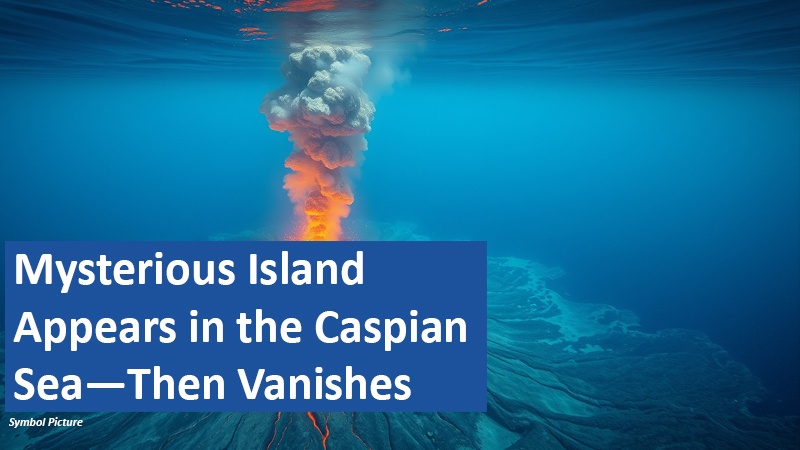
A stunning natural phenomenon unfolded in the Caspian Sea when a mysterious island emerged—only to disappear months later. NASA satellites captured this rare event, but the forces behind its brief existence are as puzzling as its sudden collapse. What caused this island to rise from the depths, and why did it vanish so quickly?
Discover the best deals on Amazon now!
An Underwater Volcano Behind the Mystery
NASA’s Landsat 8 and 9 satellites first detected the island in early 2023, about 25 kilometers off the coast of Azerbaijan. Measuring approximately 400 meters in diameter, the landmass suddenly emerged from the sea, only to vanish by the end of 2024. Scientists believe its formation was triggered by an underwater mud volcano known as Kumani Bank.
Unlike traditional volcanoes that erupt with molten lava, mud volcanoes release water-saturated sediments due to intense pressure beneath the seafloor. This process can briefly create new landmasses, but they remain highly unstable. With over 400 mud volcanoes, the Caspian Sea is one of the most geologically active regions of its kind.
A Short-Lived Island’s Rise and Fall
Scientists tracked the island’s life cycle using satellite imagery. In November 2022, Kumani Bank remained fully submerged. However, between January and February 2023, an eruption forced sediment to the surface, creating a temporary landmass. It remained visible for nearly two years before ocean currents eroded it away by late 2024.
This was not the first time Kumani Bank produced such a feature. A similar island appeared in 1861 but disappeared within a year. In 1950, a larger island—measuring 700 meters across and rising six meters above sea level—formed after a major eruption but also eventually crumbled into the sea.
Why Do These Islands Disappear?
Mud volcano islands are temporary because they lack the solid rock foundation of typical volcanic islands. Several factors contribute to their rapid erosion:
- Wave action: Ocean currents gradually wash away the unstable sediment.
- Gravity collapse: Loose materials sink under their own weight.
- Gas emissions: Underground gas releases weaken the island’s structure.
The swift disappearance of the 2023 island highlights the ever-changing nature of the Caspian Sea’s geology.
What Other Secrets Does the Caspian Sea Hold?
Although this island no longer exists, NASA’s observations provide valuable insight into Earth’s geological processes. The Caspian Sea’s mud volcanoes serve as a natural laboratory for studying sediment movements, pressure dynamics, and tectonic activity.
While Kumani Bank remains submerged for now, history suggests it may not stay quiet for long. Another island could be forming beneath the waves—only to disappear again, leaving behind yet another mystery.
Could similar mud volcanoes shape landscapes in other parts of the world? What long-term impact might they have on coastal regions? Share your thoughts in the comments!
Based on content from www.dailygalaxy.com and own research.